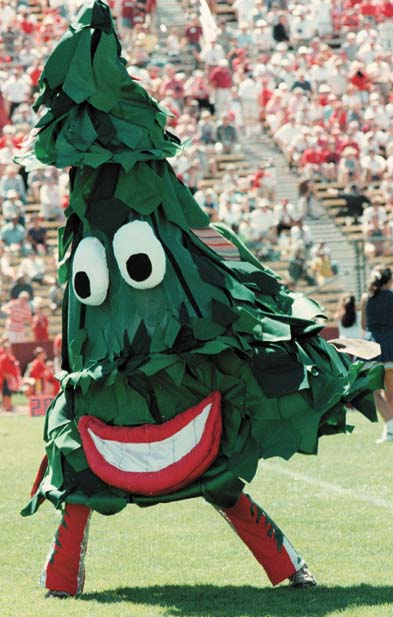
|
SuperTeacherTools |
|

|

|
A - C - D - B
C. 36-38
C. water and carbon dioxide
B. semi-permeable
Coach
D. E
Notre Dame
C. Metabolism
A. Oxygen
Luis Vuitton
Ugg Boots
Duke
B. Photons
A. will have 46 chromosomes
Virginia Tech
B. Chlorophyll
C. Substrate
C. mitosis
Stanford
D. Glycolysis
Coco Chanel
C. C6H12O6.
THE Ohio State University
A. process of glycolysis
The separation of daughter chromosomes and division of a cell nucleus to form two nuclei, each with a full set of chromosomes, is called
A. cell division.
B. specialization.
C. mitosis.
D. cytokinesis.
The first stage of cellular respiration is called
A. oxidative respiration.
B. the Krebs cycle.
C. the Calvin cycle.
D. glycolysis
Which is the correct sequence for the stages of mitotic cell division represented by the diagram below? (letters only; ABCD)
Which of the following is an example of a pigment?
A. NADPH
B. chlorophyll
C. pyruvate
D. sucrase
Two reactants that are used in the process of photosynthesis are
A. carbon dioxide and oxygen.
B. glucose and water.
C. water and carbon dioxide.
D. oxygen and water.
Aerobic cellular respiration requires an adequate supply of
A. oxygen.
B. carbon dioxide.
C. ethyl alcohol.
D. starch.
Buckeyes


One molecule of glucose is broken down into two molecules of pyruvate as a result of the
A. process of glycolysis.
B. light reactions of photosynthesis.
C. digestion of a protein.
D. diffusion of water across a membrane.
Fightin' Irish
The Tree

The nucleus of a cell has 46 chromosomes before mitosis. After mitosis, each new cell nucleus
A. will have 46 chromosomes.
B. will have 23 chromosomes.
C. will have 92 chromosomes.
D. will have an unknown number of chromosomes.
Hokies
A substance produced during the process of photosynthesis that is used in cellular respiration (when broken down, it provides energy in the form of ATP).
A. O2.
B. H2O.
C. C6H12O6.
D. NADPH.

The gases (oxygen and carbon dioxide) pass through this structure
A. A.
B. B.
C. C.
D. E.
Blue Devils

What is the net gain in ATP following completion of aerobic cellular respiration of one molecule
of glucose in a brain cell?
A. 30
B. 2
C. 36-38
D. 4
Tiny packets of light energy are called
A. enzymes.
B. photons.
C. catalysts.
D. substrates.
Some but not other materials are admitted through a cell membrane. The membrane is called
A. impermeable.
B. semi-permeable.
C. permeable.
D. fully permeable.
The sum of all of the chemical reactions occurring in a cell is called
A. photosynthesis.
B. diffusion.
C. metabolism.
D. oxidative respiration.

The molecule on which the enzyme acts is called the
A. catalyst.
B. pigment.
C. substrate.
D. photon.


| Description | Match: |
Aerobic cellular respiration requires an adequate supply of A. oxygen. B. carbon dioxide. C. ethyl alcohol. D. starch. | A. Oxygen |
The molecule on which the enzyme acts is called the A. catalyst. B. pigment. C. substrate. D. photon. | C. Substrate |
One molecule of glucose is broken down into two molecules of pyruvate as a result of the A. process of glycolysis. B. light reactions of photosynthesis. C. digestion of a protein. D. diffusion of water across a membrane. | A. process of glycolysis |
What is the net gain in ATP following completion of aerobic cellular respiration of one molecule of glucose in a brain cell? A. 30 B. 2 C. 36-38 D. 4 | C. 36-38 |
The first stage of cellular respiration is called A. oxidative respiration. B. the Krebs cycle. C. the Calvin cycle. D. glycolysis | D. Glycolysis |
Hokies | Virginia Tech |
Fightin' Irish | Notre Dame |
Blue Devils | Duke |
Buckeyes | THE Ohio State University |
The Tree
| Stanford |
Which of the following is an example of a pigment? A. NADPH B. chlorophyll C. pyruvate D. sucrase | B. Chlorophyll |
The gases (oxygen and carbon dioxide) pass through this structure A. A. B. B. C. C. D. E. | D. E |
Two reactants that are used in the process of photosynthesis are A. carbon dioxide and oxygen. B. glucose and water. C. water and carbon dioxide. D. oxygen and water. | C. water and carbon dioxide |
Tiny packets of light energy are called A. enzymes. B. photons. C. catalysts. D. substrates. | B. Photons |
A substance produced during the process of photosynthesis that is used in cellular respiration (when broken down, it provides energy in the form of ATP). A. O2. B. H2O. C. C6H12O6. D. NADPH. | C. C6H12O6.
|
| Coco Chanel |
| Luis Vuitton |
| Ugg Boots |
| Coach |
The nucleus of a cell has 46 chromosomes before mitosis. After mitosis, each new cell nucleus A. will have 46 chromosomes. B. will have 23 chromosomes. C. will have 92 chromosomes. D. will have an unknown number of chromosomes. | A. will have 46 chromosomes |
The separation of daughter chromosomes and division of a cell nucleus to form two nuclei, each with a full set of chromosomes, is called A. cell division. B. specialization. C. mitosis. D. cytokinesis. | C. mitosis |
Some but not other materials are admitted through a cell membrane. The membrane is called A. impermeable. B. semi-permeable. C. permeable. D. fully permeable. | B. semi-permeable |
The sum of all of the chemical reactions occurring in a cell is called A. photosynthesis. B. diffusion. C. metabolism. D. oxidative respiration. | C. Metabolism |
Which is the correct sequence for the stages of mitotic cell division represented by the diagram below? (letters only; ABCD) | A - C - D - B |